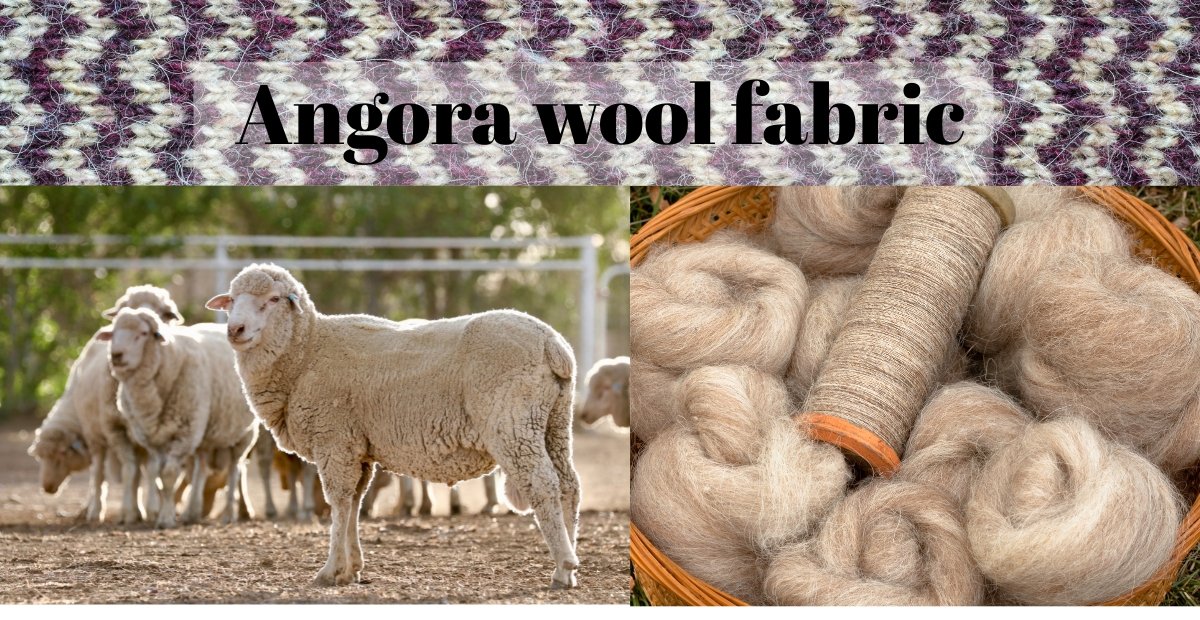Angora wool fabric is the epitome of luxury. The elegance and charm of Angora wol fabric have been keeping it in excellent and high demand for a very long time. is highly appreciated and sought for its delicacy, warmth, and silky touch. The fabric is one of the natural textile fibers of the highest quality.
This article will provide the history, properties, uses, benefits, and care tips of Angora wools fabric. Furthermore, it will explain why the fabric is highly sought for in fashion and home décor.
History of Angora Wool Fabric
The initial instances of Angora wools fabric appeared in Turkey, more precisely, the Ankara region, from which the term “Angora” is derived. For many years, the Angora wol fabric rabbit was cultivated for its fine coat.
Angora rabbits reached 18th century Europe, specifically France, and also became fashionable with the French elite. The practice of breeding Angora rabbits has expanded to many other countries, and today, and today Angora wool is produced in many different countries, with China being the largest supplier.
Angora wool fabric has a long and well documented history, which is one of the reasons why it continues to be viewed as a luxury product in the textile market.
Properties of Angora Wool Fabric
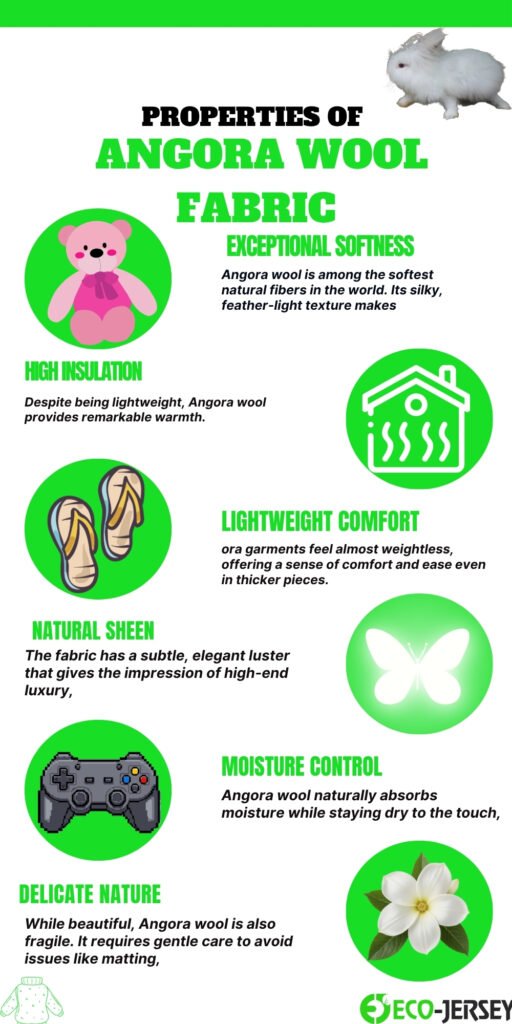
There is still a question of what makes Angora wool fabric so special? This is almost exclusively due to the unique properties of Angora wool which includes remarkable differentiation from other wool varieties.
1. Exceptional Softness
Angora wool is one of the softest natural fibers in the world. Its silky texture makes it easy to wear for the softest garments.
2. High Insulation
The wool is lightweight, but it offers remarkable warmth. The hollow core of the fiber traps air, which enhances insulation.
3. Lightweight Comfort
The Angora wool garments will leave you feeling like you’re wearing nothing at all. Even the more substantial items will give you this peace of mind.
4. Natural Sheen
The luster of the fabric creates an illusion as if more expensive threads were used, while in reality it’s the Angora threads.
5. Moisture Control
Garments created using Angora wool will keep you comfortable all day due to it’s ability to absorb moisture without feeling wet.
6. Delicate Nature
Angora wool is gorgeous and delicate, needing to be cared all the time to avoid matting and shedding.
Types of Angora Wool
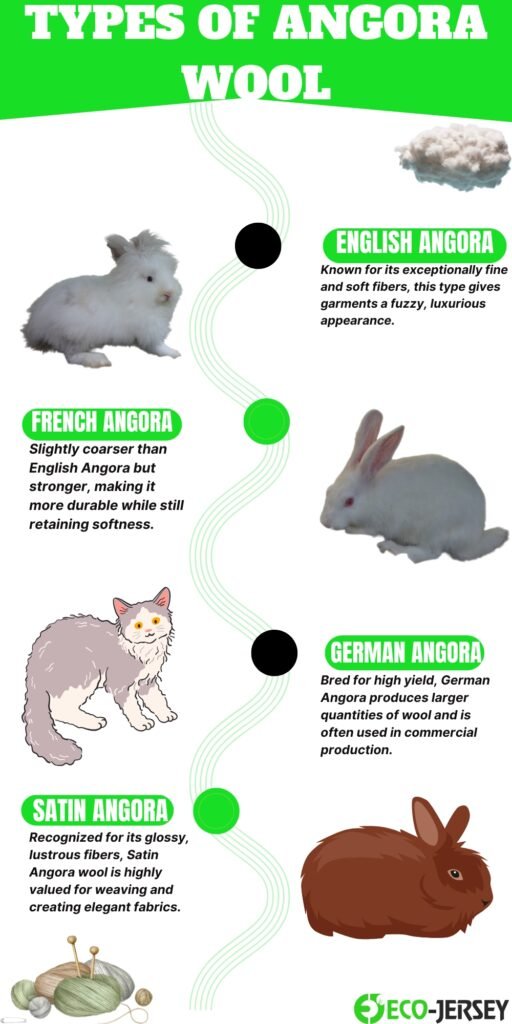
Angora wool differs from one another. Depending on the rabbit breed and production method, Angora wool differs in:
- English Angora: Because of it’s finely soft wool and fuzzy look, is well recognized.
- French Angora: Coarser but stronger compared to the English Angora.
- German Angora: More wool is produced and is sold commercially.
- Satin Angora: Best for weaving due to it’s glossy fibers.
This variety enables designers and consumers to expand their creativity in fashion and home décor.
Uses of Angora Wool Fabric
The softness and elegance of Angora wol fabric creates endless possibilities in different industries.
1. Fashion Apparel
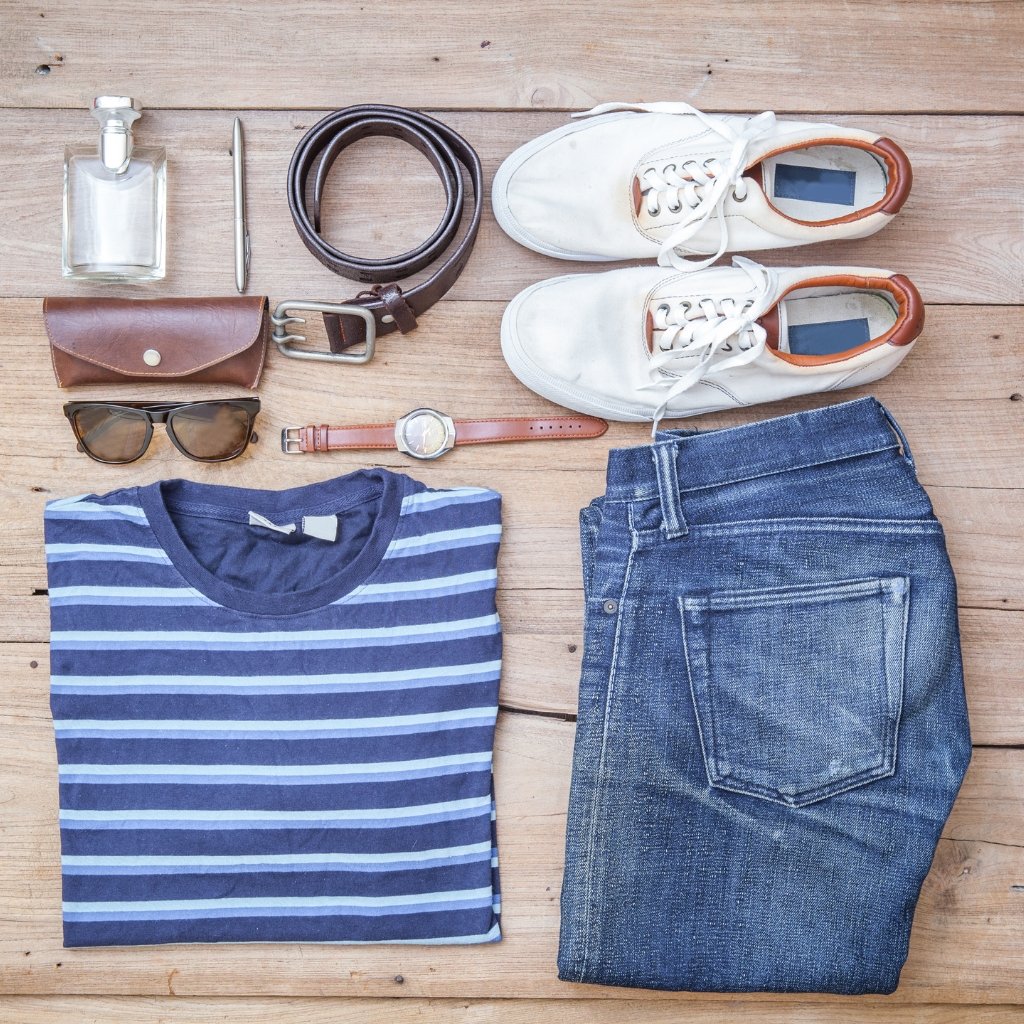
Angora wool is most commonly found in:
- Sweaters and cardigans
- Scarves and shawls
- Hats and gloves
- Luxury coats
It provides just the right level of warmth during winter apparel season without adding bulk.
2. Accessories

The softness of Angora wool also makes it a desirable material for luxury socks, mittens, and infant apparel.
3. Art Farming

Angora wools fabric, although less popularly utilized, can be found in elegant throws and as fabric for some decorative cushions and even blankets.
Benefits of Angora Wool Fabric
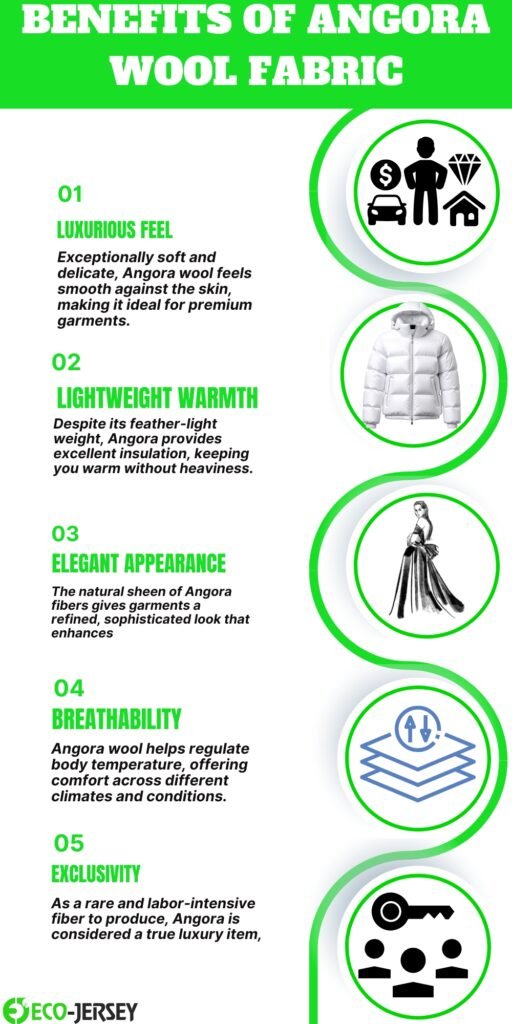
The following are just some of the many reasons what is wool fabric is highly sought after and is a staple in the industry:
- Luxurious Feel: Soft and delicate against the skin.
- Lightweight Warmth: Insulating but not heavy.
- Elegant Appearance: Sheen provides additional sophistication.
- Breathability: Regulates body temperature.
- Exclusivity: Rare and often considered a luxury item.
The exclusivity and the overall characteristics of Angora wool make it a highly sought after fabric in the industry.
Disadvantages of Angora Wool Fabric
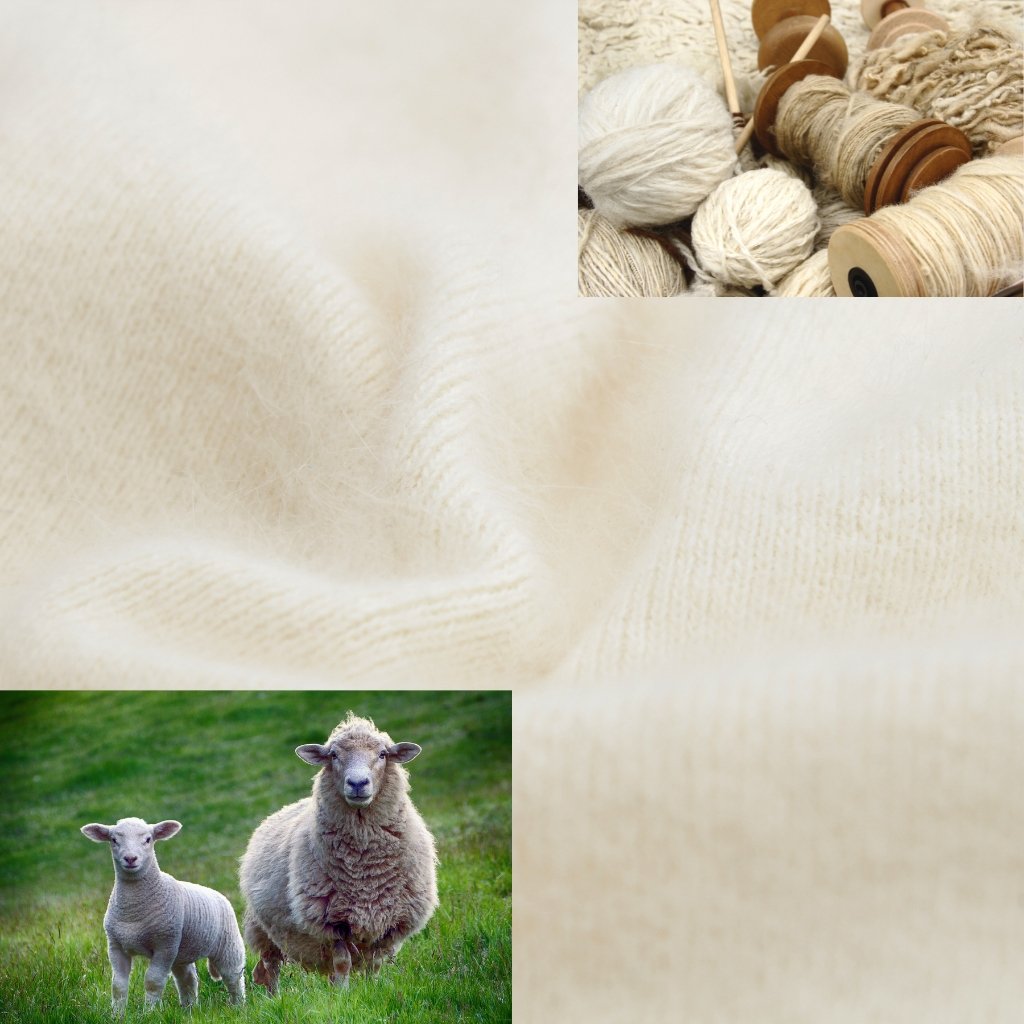
Even though Angora wol fabric is highly sought after, it does have some disadvantages:
- Delicate Nature: It is easily damaged if handled roughly.
- Shedding: Fibers, especially low-quality products, tend to shed, and this can be problematic.
- Cost: The expense associated with Angora wool is due to the wool fabric scarcity.
- Ethical Concerns: The welfare of the Angora goats is also a concern, and many seek ethically sourced Angora due to the unregulated practices in the Angora wool industry.
Knowing the disadvantages allows the consumer to make educated decisions.
Angora Wool Fabric Care
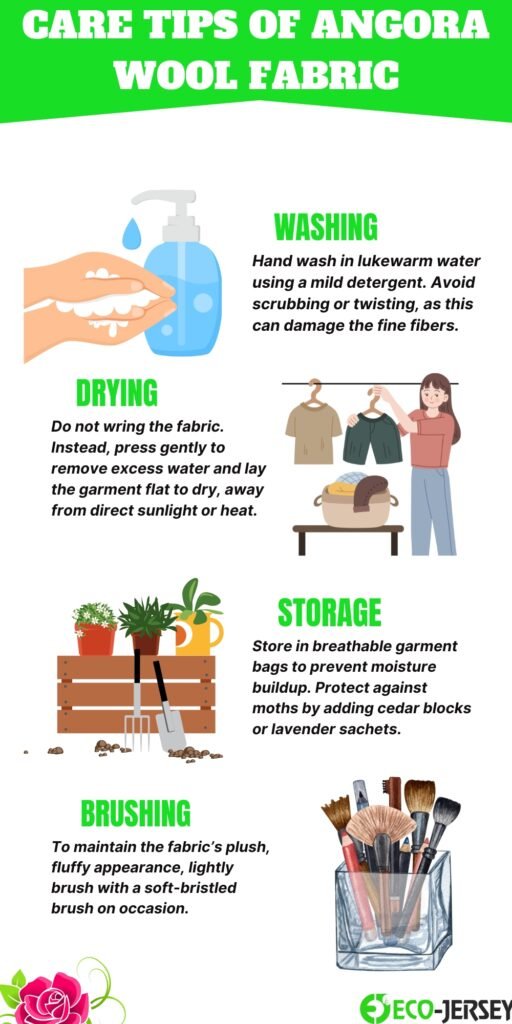
Due to the wool’s delicate fibers, Angora wool fabric also requires special consideration.
- Washing: Angora wool fabric should be hand washed in lukewarm water and mild detergent, and avoid a wash that requires scrubbing.
- Drying: To dry, do not wring the fabric. You should press the fabric to remove excess water and lay flat to dry.
- Storage: Use breathable bags and protect from moths with cedar or lavender sachets.
- Brushing: To encourage the plush appearance, softly brush the fabric with a gentle touch.
Your care preserves the Angora wool fabric in a fine state.
Sustainable Angora Wool
Ethical Angora production also involves the use of Angora goats. In some countries, the unregulated practices of Angora wool production have started to be controlled due to consumer and environmental sustainability cares.
Nevertheless, Angora wool fabric is eco-friendly and ethically produced Angora wool fabric is still a available.
Ethically sourced Angora wool also should be used to ensure the fabric is luxurious and guilt free.
Conclusion
Angora wool fabric is the epitome of luxury, style, and comfort. The fabric is a classic in the fashion and home decoration industry, and the reason for this is the lightweight warmth it provides along with its silky texture, natural sheen, and softness. This is a timeless piece. The careful maintenance and high costs are justified with the benefits it has for a classy and sophisticated customer. Such a customer has a high regard for quality.
FAQs
What is Angora Wool Fabric made from?
Angora wool fabric is made from the soft fibers of Angora rabbits, known for producing some of the finest and most luxurious natural fibers.
What are the main benefits of Angora Wool Fabric?
The fabric is exceptionally soft, lightweight, warm, breathable, and naturally lustrous, making it a luxury choice for clothing and accessories.
How do you care for Angora Wool Fabric?
Hand wash with mild detergent, lay flat to dry, and store in breathable bags. Brushing with a soft brush helps maintain fluffiness and sheen.

